Let's smile again when saying freeride. By Giulio Caresio
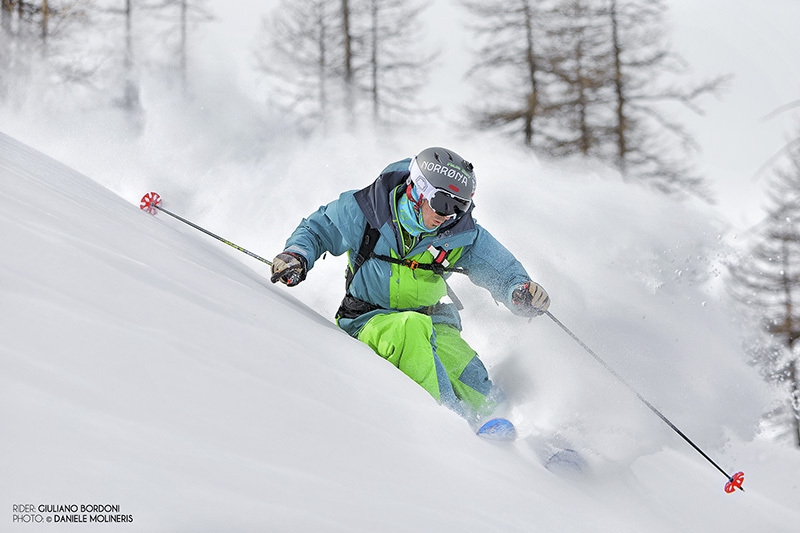
 1 / 11
1 / 11 Daniele Molineris
Daniele Molineris
We took advantage of the Courmayeur stage of the world's most important freeride circuit, the Swatch Freeride World Tour (FWT) by The North Face, to try and understand the problem and to outline possible solutions by asking questions to those who ski and work off-piste throughout the entire winter, if not all year round.
Before passing the baton to Nicolas Hale-Woods, the owner and founder of FWT (and also inventor of Xtreme Verbier), I'd like point out some things that were discussed during informal chats with athletes, friends and guides. In particular, I'd like to thank Giuliano Bordoni (mountain guide and freerider), David Cusini (ski instructor and The North Face athlete who competed at Courmayeur), Alessio Giachin Ricca (talented freerider), Veronica Balocco (journalist for Eco di Biella and freerider) and Nicola Busca (journalist and ski instructor).
Freeride and off-piste skiing are not synonyms. It a certain sense it would be a great thing were they become so, by aligning themselves "upwards" culturally speaking, instead of "downwards" as is often the case. It's not a question of semantics but of substance and well worth clarifying.
In practice, going "off-piste" in Italy often translates into the occasional ski away from them pistes: an experience that is fairly trendy during which people venture out in search of new excitement. Unfortunately though this is often done without specific preparation and without basic knowledge about mountain safety. This habit must certainly be discouraged.
Freeride, like all other outdoor sports in "not safe" environments, is a discipline that requires proper preparation, from all points of view, through the help of pros. Most freeriders I know are mountain guides, ski instructors and athletes, and those who do it as "amateurs" are always accompanied by someone who has the proper experience.
A winter environment, even if only when walking with snowshoes away from the groomed pistes, requires in-depth knowledge of the elements in order to assess risk, as well as acquaintance with safety gear to rescue someone buried in an avalanche. This is the message that needs to be written in capital letters by those who inform, first and foremost by journalists. And this is the message that must be communicated and demonstrated by those who instruct, first and foremost by mountain guides and ski instructors.
Lightness doesn't equate to superficiality. While the former is more than welcome - only God only knows how much we need this to deal with the increasing burdens of everyday life - the latter most certainly is not. Let me explain. Many freeriders I've been lucky enough to meet are free spirits, happy and carefree, often flamboyantly dressed and all smiles. I think this is fantastic. But far too often one tends to associate this precious lightness with a degree of superficiality when it comes to taking to the mountains. In my opinion though, things couldn't be further from the truth. For these freeriders are often highly trained, they know the perils they face, are skilled rescuers, capable of applying their experience to correctly assess the snow conditions, the weather, etc.
I've often noticed snowshoers who are decidedly less prepared, as well as piste skiers who believe that in order to leave the groomed runs all that's needed is a set of wide skis to fill the technical gap.
So let's watch out for easy stereotypes: someone who is happy, always ready for a joke or two or dressed in motley colours isn't automatically reckless, someone who faces risk with superficiality.
Stupid deaths must stop. I think this is something we all agree on. The adjective stupid has been used to indicate situations that could have been avoided with a little intelligence and preparation, and sadly there are many of these. Having said that, it is also important to know that not all deaths are stupid. In fact...
Risk isn't, and never will be, zero. Far too often we forget that nothing is zero risk, not even sitting on the sofa. This means therefore that we need to assess risk, understand how to reduce the most substantial elements that often depend on the decisions we make and our own preparation... But then, if we don't want to remain stuck to the sofa, we have to accept that there is such a thing as residual risk and learn how to deal with it. This obviously applies to everything we do, in the mountains (freeride, alpinism, rock climbing... but also to a simple weekend walk) as to life in general.
Climate is changing. Marked temperature fluctuations and dense rainfall seem to favour more critical conditions of snowpack stability. This explains why our perception of risk needs to be updated in order to take into account how this influences a series of factors that have been determined by this change.
Freedom helps personal growth and demands responsibility. The mountains have always been a place for freedom, for discussion, exploration and personal growth. Anyone who takes to the mountains knows this and loves them for this reason, as was recently underlined by Alessandro Gogna (in the Italian newspaper Repubblica) and Dominique Perret (in the French newspaper Le Matin). Freedom certainly requires more education, greater awareness and responsibility regarding the choices we make.
INTERVIEW WITH NICOLAS HALE-WOODS (FWT)
Having said all that, Nicolas, what do you reckon are the right rules of this game?
"It's simple, the freeride rules are the same everywhere, in Canada as in France, Switzerland or Italy. First of foremost, know what you're dealing with, attend courses or take individual lessons, or spend time with friends or experts who know all about avalanche evaluation and how to rescue someone should they get caught up in an avalanche. Learn how to use an avalanche transceiver properly, how to use the probe and shovel as effectively as possible.
In Switzerland today - and it's not me who says this but the official statistics of the Swiss Alpine Club - we have roughly the same number of avalanche deaths as thirty years ago, while the number of those who ski off-piste is estimated as being at least ten times higher. How come? This number remains unchanged because there's been an increase in the number of rescues, carried out by skiing partners, of those who get caught in an avalanche. We know that 15 minutes is the time limit, after which the chances of survival decrease dramatically, so immediate companion rescue is the best thing.
In addition, there are some good rules that all freeriders must adhere to. First of all, find out about the dangers of a chosen route, about the snow conditions and the weather: all that's needed is a phone call or a quick check at the mountain guides office to ask "what do you think?", "what are the critical sections" etc
Another important point is to ski as a group and, when descending, to respect the correct distance between each freerider so that, should someone get buried in an avalanche, the others can intervene. And then there's new equipment, in particular the ABS rucksacks (airbags), which certainly don't ensure safety, but in many cases stop skiers from being buried deep down under masses of snow. So it's by no means complicated and boils down to: knowledge, training and equipment."
You talk about education: is an avalanche rescue course enough?
"Attending a course and learning is definitely essential, nevertheless this doesn't suffice. It's important to regularly do avalanche rescue training exercises so as to develop those automatic responses that are indispensable for avalanche rescue. When an avalanche occurs it's a fairly traumatic experience, often you know the person buried beneath the avalanche and if you don't know what to do automatically, then it's highly likely that you'll panic. So you need to train continuously to know how to deal with the emergency situation: there's a big difference between knowing how to do something in theory and really knowing what to do in practice.
Every year I spend quite a lot of time with my children practicing. And this doesn't necessarily need to be done as something serious and distressing; there are many fun and highly efficient ways of training, especially with kids. Furthermore, an increasing number of ski resorts have set aside avalanche rescue training areas and these are great to learn how to deal with multiple burial accident situations. In the next few years I think rapid progress will be made in Italy, in Switzerland for example not many people were trained until about 10 - 15 years ago, while today many are.
The growth in popularity of freeride will have a very positive effect on spreading the right safety message. The example of Verbier in 1994 is a case in point: at the time the Xtreme was a freeride competition without precedents (actually the first of its kind in Europe) and I accepted to work for it because of the enthusiasm of the Valais safety manager who, when we presented this project, started off by saying "this event is an ideal opportunity to provide the future generations of skiers with the best eduction possible." And I'm convinced he was right."
What's your view about safety and freeride in Italy?
"It's clear that Italy has a great alpine tradition, its mountain culture has few equals and some of the world's best climbers and skiers are Italian. From a freeride point of view though Italy lags behind slightly, and I think this is due to Alberto Tomba who, thanks to his charisma, defined what skiing would be like in Italy during the twenty years that followed his victories. Don't get me wrong, he had an extraordinary and positive impact on skiing, but it is exactly because of this that he strongly marked and influenced it. But now all this will change quickly because there's a new generation of young athletes, mountain guides and ski instructors who know the joys of off-piste skiing and know how to teach it. And the foundations will be solid because they're based - as I said previously - on a great tradition."
How important is it to know when to turn back?
"It's essential, you always need to be ready to turn back, it's as important as knowing about the prevailing conditions and asking the local guides for advice. The mountain guides we work with in Italy are exceptional, just like all the others who work with us in the other countries. I think the recent example of the FWT in Courmayeur is significant. The decision to not compete on Mont Fortin was taken because the avalanche risk was high. We also decided against Tête d’Arp because the snow conditions weren't ideal. So we worked hard at finding a different solution to the obvious choices that could nevertheless offer safer conditions. We did everything we could to adapt to the unfavorable weather conditions but despite all our efforts on Friday we eventually called off the competition - already announced and in the running - due to poor visibility and therefore for safety reasons. These are all important examples."
Last question, what do you think about the creation of freeride routes, specifically marked and managed, for beginners?
"This is an interesting question and different aspects need to be considered carefully. Routes located close to groomed pistes are skied both frequently and regularly and this solidifies the snow pack and makes it more stable and compact. In some ski resorts they decide to blast hazardous slopes to trigger controlled avalanches and make the slope safe, especially where avalanches could hit pistes. Like this many runs are made far safer than they otherwise would be. One needs to be aware of this difference, because not knowing this could create a misperception of risk, especially when one takes into account that, I believe, this represents 90% of all off-piste skiing. For the remaining 10% things are different, if you don't have sufficient experience things can be deceptive, and you need to be aware of this to not underestimate potential pitfalls and dangers."
To conclude, you cannot suddenly improvise becoming a freerider, just like you cannot suddenly improvise becoming an alpinist. And you mustn't believe that all that's needed is to be a competent piste skier to safely deal with off-piste terrain. As often happens, knowledge is the key, combined with a gradual learning curve and gradual application so that what you do is always proportional to your technical ability, your training, your safety preparation, the assessment of the mountain and the snow conditions.
A blanket ban on off-piste skiing doesn't make sense. It discourages those who behave most responsibly, it isn't in line with what's happening beyond Italy's borders and puts an end to the possibility of providing proper training to a wider audience. And not only that: in my opinion - and this is even worse - it doesn't allow us to seize the opportunity to get rid of our country's established custom of transferring the responsibility of personal choices elsewhere (in this case, a prohibiting law). The belief that everything must be safe and guaranteed is such that, all too often, people stop thinking, avoid understanding situations and avoid adapting accordingly. It is this approach, and the attitude that derives from it, that makes us take the biggest risks.
This does not mean that a ban may make sense in situations characterized by particularly severe conditions, which jeopardize the safety of areas used by the masses, or in areas that require special environmental protection. But if we pursue prohibition at all costs, tomorrow we might ban diving into the sea to avoid drowning, or walking down the stairs because you might fall.
We should instead takes the opportunity we've been given to promote culture, education, intelligence, and responsibility, to raise awareness and desire for the outdoor in a country that is basically still sedentary. To instill confidence and provide our mountain guides with work, and to smile once again when we talk about freeride.
by Giulio Caresio



 Copia link
Copia link
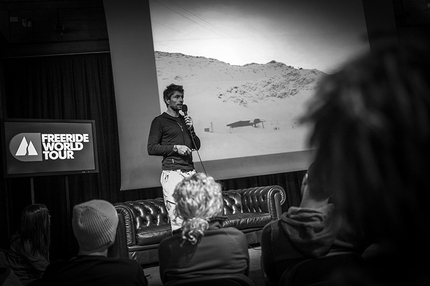
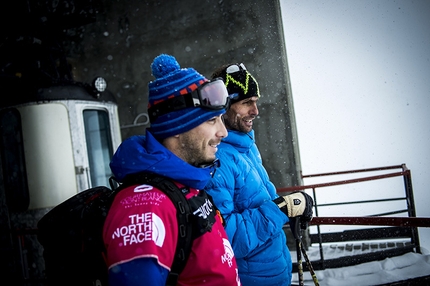
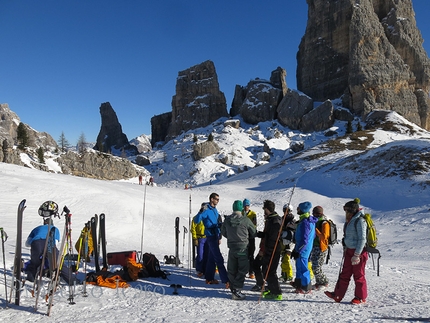
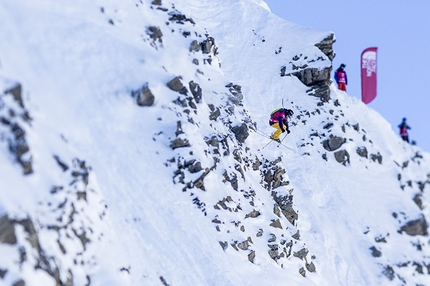
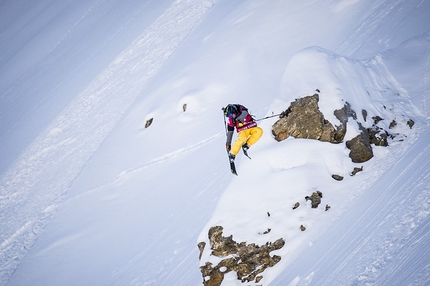
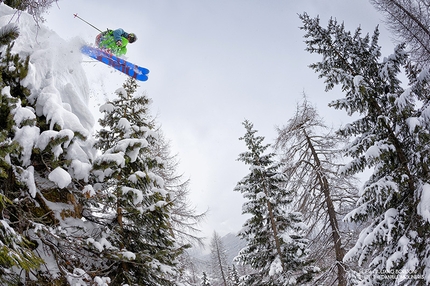
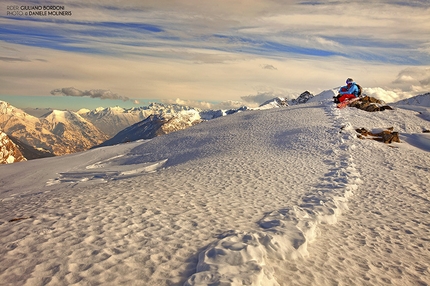
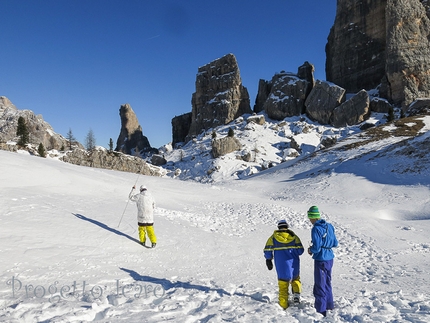
 See all photos
See all photos






















